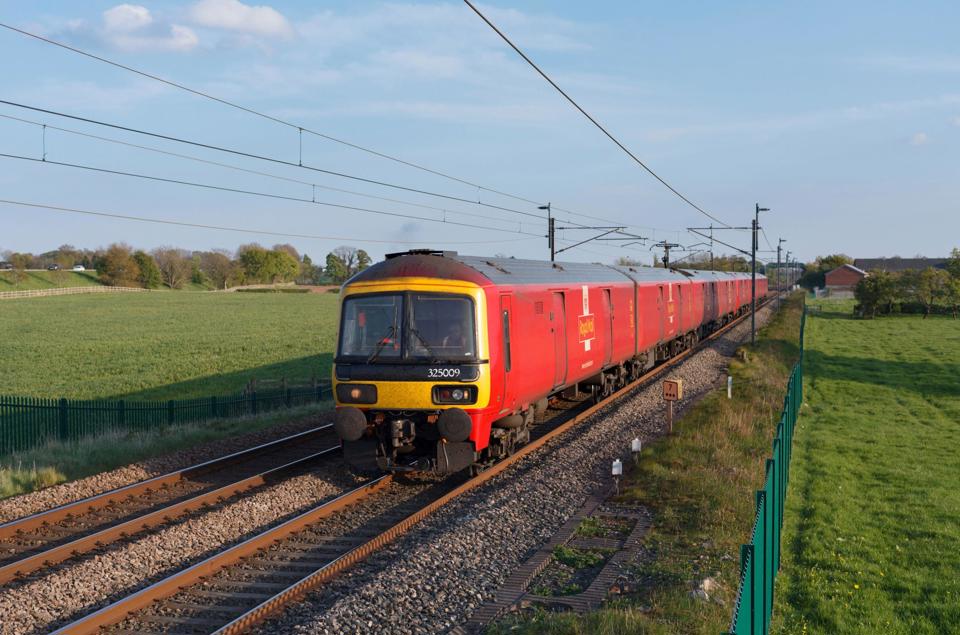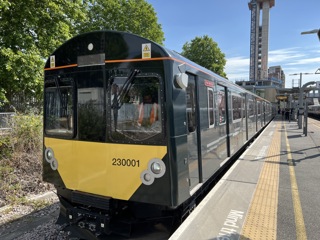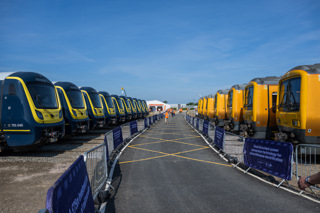To some, Royal Mail’s decision to move its postal deliveries from rail to road, and in turn decommission its remaining fleet of trains (which currently stands at a fleet of six Class 325 electrics), was a long time coming.
In some ways, those people would be correct - Royal Mail has for decades been moving slowly away from mail by rail.
To some, Royal Mail’s decision to move its postal deliveries from rail to road, and in turn decommission its remaining fleet of trains (which currently stands at a fleet of six Class 325 electrics), was a long time coming.
In some ways, those people would be correct - Royal Mail has for decades been moving slowly away from mail by rail.
From its pre-Second World War boom of 130 Travelling Post Offices (TPOs) that sorted mail on the move, Royal Mail has slowly (but progressively) shifted its mail operations to other modes of transport.
The flexibility of road deliveries, issues with timetabling, and fluctuating costs have combined to gradually diminish mail by rail’s importance to the company.
By the 1980s, TPOs (operated by British Rail subsidiary Rail Express Systems) were only sorting first class post.
By 1994, only 24 TPOs were left. And at the beginning of privatisation, Royal Mail embarked upon a new logistical approach which effectively killed off the need for TPOs.
Using a ‘hub-and-spoke’ system which based mail trains in London, post was carried to depots across the country, eradicating the need for mail services at passenger stations. The once ever-present symbol of rail logistics that was fixed in the public’s mind was now very much behind the scenes.
Although Royal Mail’s fleet is rather small, the wider implications for rail freight and its role in helping the country to achieve net zero targets is large.
The company has maintained that it will still use rail to some degree in the future, but that doesn’t escape the fact that Royal Mail trains have been ubiquitous in this country for decades and have always been regarded as a flagship carrier. For this to now come to an end sparks a debate as to rail freight’s capability to step up to that net zero challenge.
But the march of time and technology is only partly to blame for why this has happened. If you want reasons, cost is one of the obvious places to start.
As has been documented by many, high EC4T (electric current for traction) charges are hampering growth for rail freight, at the very time when government should be making the case for it. In fact, it currently costs 30% more to run an electric locomotive than a diesel.
There is no doubt that the cost of running electric trains is a major source of discomfort for Network Rail, which pays up front for the electricity and then charges to passenger and freight operators. It expects the cost to be nearly £900 million this year, compared with just over £500m four years ago.
This isn’t news to DB Cargo, which last year stopped operating its fleet of electric Class 90s after the price of electricity rocketed, reverting to its fleet of diesel Class 66s.
This wasn’t news to Freightliner either, which had temporarily stopped running its Class 90s on similar grounds a year earlier.
Nor are high EC4T charges news to Royal Mail, although in 2020 the company had seemingly strengthened its commitment to rail when it renewed its contract with DB Cargo.
At the time, it boasted that rail was an integral part of its operation to move mail and parcels, as well as saying that it was looking forward to a long partnership of innovation and growth.
That commitment to rail freight (it was believed) was reinforced by its investment in its Midlands Super Hub at Daventry International Rail Freight Terminal (DIRFT) - a huge facility that is capable of processing 90,000 parcels an hour, although at the time of its launch in 2023, only one Royal Mail train a day was operating from the new base.
The new government will need to look at this as a whole, rather than in piecemeal. Can it support growth in rail freight at the same levels that the previous government had promised?
While the Conservatives’ target of 75% growth in rail freight by 2050 was seen by some as ambitious, it did at least provide some clarity on that ambition. The new government should give similar assurances in the King’s Speech (due to be presented as this issue of RAIL went to press).
As recently as 2022, then-Royal Mail CEO Simon Thompson and its chairman Keith Williams (of Williams-Shapps Plan for Rail fame and the current chairman of Great British Railways Transition Team) said they wanted to treble the volume of post that was transported by rail. It currently runs just under 5% of all its post by rail.
It was even widely reported that the company was close to agreeing the necessary timetable changes with Network Rail to make that happen.
However, despite its strident talk and ambitious claims, Royal Mail was battling a plummeting share price and rising costs. This meant that while the organisation had a vision, the reality of its situation and the opening chapters of its recent decision were already beginning to play out.
At the heart of this decision is the uneven playing field on which rail freight finds itself compared with other modes - especially road.
The industry has long argued for a more flexible and creative approach to charges. Incentives to run electric over diesel, subsidies to invest in bi-mode or HVO (hydrotreated vegetable oil) locomotives, and relief with non-commodity costs (charges and fees not directly related to the electricity cost) have been mooted by many in the industry. None has come to fruition.
Alongside the higher EC4T charges, the shelf-life of Royal Mail’s current fleet has certainly been a factor in its decision.
The six Class 325s are almost 30 years old. Built in the mid-90s, they were specifically designed and built for the core purpose of transporting mail across the country. It was the last meaningful fleet investment made by the company.
Royal Mail said in its statement that given the age of its fleet, securing parts for the trains was a cost more than it was willing to bear. And while it has toyed with the idea of investing in a new fleet over the years, it has never fired the starting pistol on procurement. This is not uncommon for freight carriers - and Royal Mail is no exception.
Investing in rolling stock has long been an issue for rail freight - and to some extent Royal Mail. Freightliner CEO Tim Shoveller highlighted this in RAIL 1012, making the point that the length of track access was causing issues for freight companies when borrowing money to invest in fleets.
Without longer-term track access rights, for which the industry had been calling for some time, it could not invest in the less cost-efficient bi-mode electric locomotives. For Royal Mail, investing in new trains (given how much it costs to build even one) has been a hard sell against ever-decreasing returns.
To compound this, track access charges have increased almost every year in the time since the last road fuel duty change, which was 14 years ago.
So, Royal Mail’s fleet has limped on, until it was no longer economically viable to do so.
It is somewhat inevitable that attention has turned to the new government, to see if it can help alleviate some of the immediate pressures felt in the industry. While no redundancies are expected, the mood is bleak among unions as to how quickly any support could happen.
The most immediate hope will be with the King’s Speech, with transport and rail reform expected to feature, although it remains to be seen whether cuts to track access charges or VAT relief on EC4T will be announced.
That might be tricky in the short term, given the financial constraints on the Department for Transport. Also, inflationary costs in the sector are still affecting investment and any intervention to curb costs will take some time to take effect.
However, the Royal Mail decision should serve as a warning to the new government that rail freight cannot continue without support and tangible changes to how it operates and invests in the future.
In the long term, there is a real motive for the government to ensure that mail (as well as freight in general) stays on the tracks, given its environmental credentials. A commitment to decarbonisation and infrastructure investment across the rail freight sector should be high on the list for the government.
New transport secretary Louise Haigh has said she wants to “move fast and fix things”. But that might be too late for the future of Royal Mail’s trains.
Login to continue reading
Or register with RAIL to keep up-to-date with the latest news, insight and opinion.



















Login to comment
Comments
No comments have been made yet.